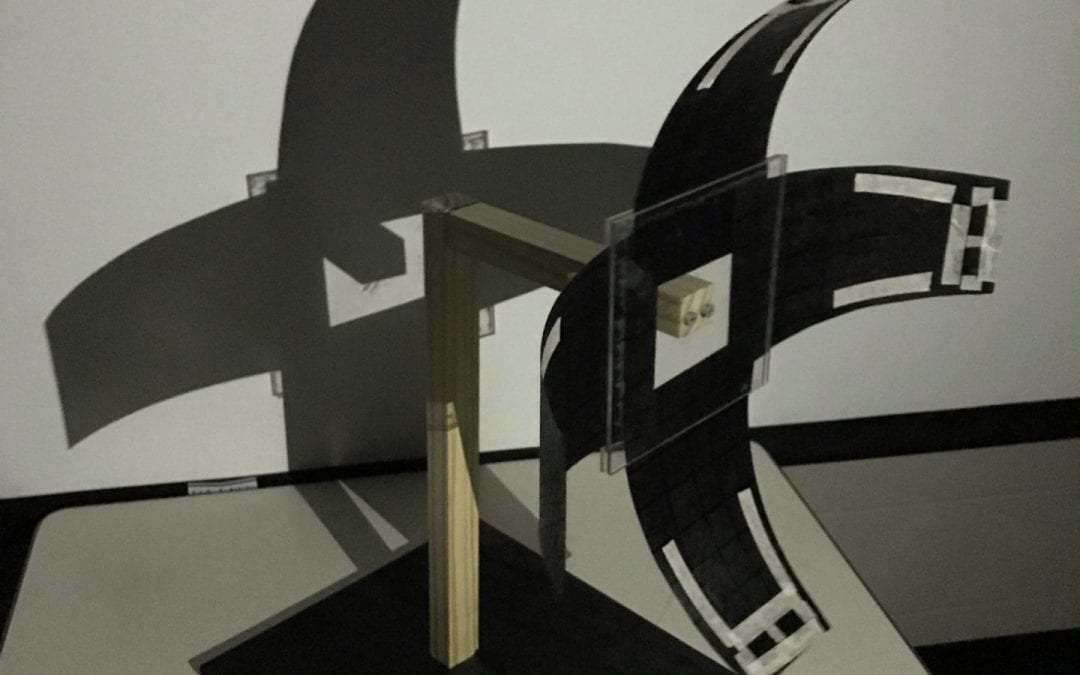The objectives of this project were to experimentally optimize the prototype façade’s configuration including location, geometry, and number of MAE on the bistable sheets and evaluate actuation repeatability.
Sponsor

Convergence Center for Living Multifunctional Materials Systems (LiMC2)
Team Members
Andrew Fox | Megan Costantino | Koby Minnich | Xin Luo | Joseph Berthel | Daniel Quedenfeld | | | | | |
Project Poster
Click on any image to enlarge.
Project Summary
Overview
To improve the energy efficiency of buildings, dynamic building envelopes can be used to change the amount of shading casted on a building’s interior. The combination of bistable sheets and responsive polymers can create shading facades that do not require a mechanical means of operation. This project focuses on optimizing the design of these shading facades using magneto active elastomer (MAE) as the responsive polymer. Parameters including MAE location, geometry, and number along with bistable sheet geometry and fixture geometry were experimentally investigated to see their impact on functionality and repeatability.
Objectives
The objectives of this project were to experimentally optimize the prototype façade’s configuration including location, geometry, and number of MAE on the bistable sheets and evaluate actuation repeatability.
Approach
-A literature review was conducted to understand the physics of responsive polymers
-Over 30 concepts of MAE configurations and experimental setup were created and sent through selection using a AHP matrix
-Patents and existing products including material compositions and experimental tools were reviewed
-Iterative tests on several configuration variables and prototype setups were conducted using a modified Taguchi array
-Customer and prototype needs were gathered through frequent sponsor communication
-An adjustable testing setup was modelled in CAD and fabricated
-Prototype experimentation was aimed at evaluating functionality and operation repeatability
-Experimental results were compiled and analyzed to determine optimal configuration
-Optimization was achieved by minimizing MAE usage while maintaining satisfactory functionality
Outcomes
-Provided the sponsors with a database of the effects of MAE location, size, number, and thickness
-Determined and fabricated an optimal MAE configuration for a trapezoidal bistable sheet
-Constructed a multi-unit shading façade with MAE configurations dependent on bistable sheet orientation
-Designed a bistable sheet fixture (boundary condition) that reduces the required actuation force
-Fabricated an experimental testing rig that can be used for further testing




